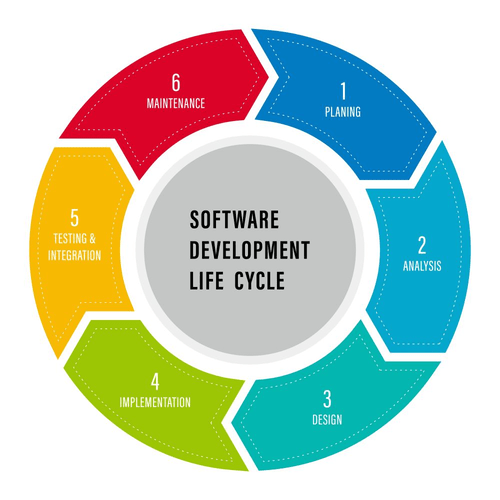To create this new branch, type “git checkout -b branchNameHere” (so, in our case, “git checkout -b hello_octo”). This command lets you delete the branch even if it hasn’t been merged or pushed. #5 Release Branch By creating a dedicated branch for releases makes it possible for the team to focus on both release and developing a new feature at the same time. It is a supporting branch which lets you to do preparation for a production release i.e. bug fixing, documentation and so on. Incase your client disapproves the feature you can simply delete the branch instead of deleting the entire code and start working on another one without any frustration.

Using –all instead of individual filenames will Stage all changed files. We have made changes to a file and added a new file in the working directory . We are working in our local repository, and we do not want to disturb or possibly wreck the main project. When the work is complete, a branch can be merged with the main project.
How to Track Branches in Git
Use git branch to view available branches and which one is active. Git typically designates the active branch with an asterisk and a different https://globalcloudteam.com/glossary/branch/ colored font. When you merge the hotfix branch into the main branch, Git will move the main branch pointer forward to commit nr7jk.

Git ignores untracked files while switching branches, unless the file exists in the target branch; then it aborts, even if the versions in the working tree and destination branch are the same. You can use the –merge option to get around this without having to delete the untracked file, only to have Git restore it a moment later. The merge operation results in the same file, in this case. Another use for multiple branches is to continue maintenance on older versions of software.
Using branches in Git
However, in this article we focus on Git due to the many advantages this model of branching offers. This is the general syntax for directly updating a remote ref. In this case, the local object name to the left of the colon is blank, meaning to just delete the remote ref. Have been pushed to the origin repository, so that even if you lose them here, they may at least be saved elsewhere. Until one branch progresses, both branches point to the same commit.
The FAIR Cookbook – the essential resource for and by FAIR doers … – Nature.com
The FAIR Cookbook – the essential resource for and by FAIR doers ….
Posted: Fri, 19 May 2023 09:50:49 GMT [source]
Actually, I need to use git branch –no-color to make sure that the filename is free of annoying terminal escape codes. The easiest way to create a Git branch is to use the branch switch and provide a branch name. The only shortcoming of this approach is that you are not moved into the branch you just created, so a subsequent checkout is required. In this article, you’ll learn the differences and similarities between Git tags and branch development more organized and efficient. You can not make changes directly to the remote branch you are interested in – you need a local copy. Remote branches are how developers collaborate on the same project simultaneously.
4.4. Switching to an Existing Branch¶
If this file doesn’t exist, then there is no current branch. Why not use git-aware shell prompt, which would tell you name of current branch? I just created this exact same script to get the current branch name. This allows you to track information such as success rate and workflow duration or review the most recent workflow runs for a given tag. The thing is, Git doesn’t automatically allow you to work on someone else’s branches. Tobias Günther is the Co-founder of Tower, the popular Git desktop client that helps more than 100,000 developers around the world to be more productive with Git.
This development tag is on the same commit as master and origin/master. Once you create the development branch, you can see two branches in your branches section—master and development. Once you name your branch, click on create and checkout.
Git branch usage
If you delete a head branch after its pull request has been merged, GitHub checks for any open pull requests in the same repository that specify the deleted branch as their base branch. GitHub automatically updates any such pull requests, changing their base branch to the merged pull request’s base branch. They are accepted as a way to request a new working directory, staging area and project history.

Branches can be based on previous versions of the software to maintain the integrity of current progress while working on a bug fix or new feature. When first starting out, it’s best to keep things simple and so initially GitHub Flow or Trunk-based development may work best. They are also ideal for smaller teams requiring only a single version of a release to be maintained. Therefore, teams need to have a process in place to implement multiple changes at once. This is where having an efficient branching strategy becomes a priority for these teams.
Delete Branches
For a deeper understanding of rebase, I recommend the post «Using git rebase instead of git merge». If and when you use rebase mainly comes down to personal preference and the conventions in your team. Merging is probably the most popular way to integrate changes. It allows you to bring all of the new commits from another branch into your current HEAD branch. My intention with this post is to create a comprehensive overview of the things you can do with branches in Git.
- Community driven content discussing all aspects of software development from DevOps to design patterns.
- This is a short version of @dmaestro12’s answer and without tag support.
- Thus, this strategy is not suitable for handling multiple versions of the code.
- It uses temporary branches for small, frequent code check-ins into the main branch.
- In this article, you will learn more about Git branching, multiple ways to create branches, and how to merge these branches to a local or remote repository.
So we can view all existing branches by typing “git branch -a” into terminal, which tells git that we want to see ALL the branches in this project, even ones that are not in our local workspace. You can delete an already running branch from https://globalcloudteam.com/ git repository once the branch has done its job. Checkout the current working branch using git checkout command before deleting any branch. One of the biggest advantages in using git is the power and flexibility of its branching model.
Uncommitted Changes
Checkout, in this case, means to move to the development branch. Along the way, you may need to work on another branch that isn’t local on your system. You can pull or download specific branches from a remote repository to use on your system.